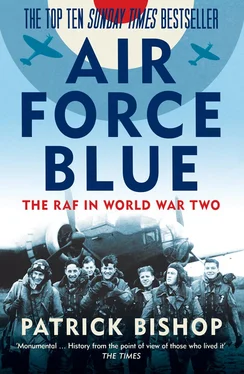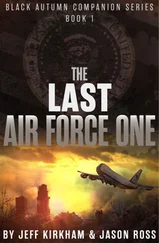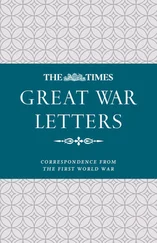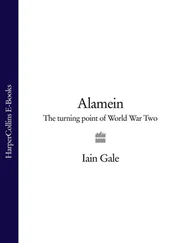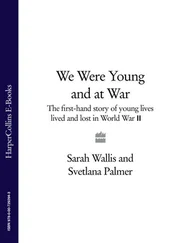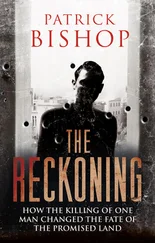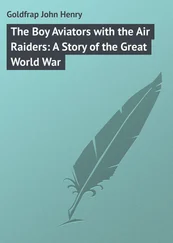Their dealings with the RAF brought a pleasant surprise. In the early autumn of 1940, when America was still more than a year away from entering the war but already supplying Britain with materiel, a delegation toured Egypt. Colonel Harvey S. Burwell of the US Army Air Forces (USAAF) was greatly impressed by the spirit of the pilots and ground crews, praising their ‘superb morale, extraordinary patience and wonderful courage’.3 He met Tedder, then head of the RAF’s Middle East Command, and some of his senior officers and was relieved to find that ‘the [British] supercilious superiority so objectionable to Americans is rarely exhibited’. The impression persisted so that the information officer was able to state in his 1944 report from Washington that ‘many people who dislike the British would not say a word against the RAF’.4
This image of unstuffiness was reinforced by a well-orchestrated stateside propaganda effort, promoting the RAF’s achievements and personalities. Guy Gibson, hero of the May 1943 Dams Raid, was pressed into service as an ambassador. In September that year he swept across North America charming interviewers, reporters and radio audiences and receiving the sort of reception normally accorded to movie stars. Humility was not a quality readily associated with Gibson at home. Abroad, however, he was seen as a ‘thoroughly nice, modest young man with a good sense of humour’.5
Above all, he was unmistakeably a great warrior. The Dams Raid was an epic feat of arms. It immediately attracted the attention of the Hollywood director Howard Hawks, who invited Gibson to stay with him in Los Angeles. Hawks commissioned a script from Flight Lieutenant Roald Dahl, a former fighter pilot then serving as a press attaché in Washington (though this version foundered on the objections of Barnes Wallis, the scientific brains behind the operation).
The Air Force projected confidence, aggression and efficiency. Whatever the Americans thought about Britain’s contribution on land and sea, no one could deny that in the air it more than pulled its weight. The first American bombs fell on Europe in August 1942. In the twenty-nine months that followed, the USAAF never matched the tonnages showered down by the RAF. It was only in January 1945 that they began to pull ahead. The final balance showed that, in the bombing war in Europe, Bomber Command dropped 873,348 tons of ordnance and the United States Eighth Air Force 621,438.6 In this field of the great Allied endeavour in the West, the British were seen to deliver more and suffer more than the US in both men and machines.7
At the business of strategic bombing, British aircraft were the best in the world. The Avro Lancaster and Handley Page Halifax were the same size as their American counterparts, the Boeing B-17 Flying Fortress and Consolidated B-24 Liberator. However, they carried much heavier bomb loads; 10,000lb against the Fortress’s 5,000lb.8
So when Americans looked at the RAF they saw an organization that did not conform to their notions of Britishness but something more akin to themselves, matching them for ambition, efficiency and swagger. Military forces mirror the values of the society they spring from. The image of Britain that the RAF presented in the glass was not the same as that reflected by the Army and the Navy. The old services represented the past. The airmen were the incarnation of how new Britons viewed themselves: modern, competent, democratic and reluctant to give to those above them the automatic deference that had hitherto been expected.
This picture of the RAF was widely accepted both inside and outside its ranks. As a result of the great attention paid to it by the press, the radio and the newsreels, the Air Force came to be seen as a repository of a new set of national values. It was a development that suited the government’s information strategy and it was soon endorsed as a recurrent trope of British propaganda. The approach carried hidden risks. In it was contained an implicit promise that the ethos the RAF enshrined would be given political expression and influence the future shape and direction of the country once the war was won.
As the conflict approached, the people of Britain absorbed the idea that the Air Force would play the dominant role in the coming struggle, as the guarantors of their survival and the agents of eventual victory. On 1 October 1938, the first issue of the weekly news magazine Picture Post appeared. It was lively, outspoken, thoroughly modern in outlook and almost immediately won a big circulation and considerable political influence. The second issue carried a long article entitled simply ‘The RAF’, part of a series intended to shed light on ‘our great national institutions’.9 It was written by Nigel Tangye, a young journalist-about-town who was also a pilot and officer in the RAF reserve. Tangye had good connections with the Air Ministry and it would have been surprising if he had not checked with them before making the momentous claim that ‘the RAF holds today a position of importance higher than the Army or Royal Navy’. The duties of the Air Force of protecting the national territory, preserving vital sea trade routes, defending the empire and lending aid to allies amounted to ‘everything which for hundreds of years has been the function of the Royal Navy’.
Publicity frequently stressed its ‘democratic’ nature, compared to the other services. ‘Officers and men in the Royal Air Force share a common spirit which is unknown either in the Army or the Navy,’ wrote Tangye. ‘So much of the Navy’s time is spent in scrubbing decks, so much of the Army’s in massed drilling. But the Air Force Machines have to fly every day, and the crews of each are bent on keeping them in tip-top condition.’
It was never presented as a classless organization. That would have been too much to claim in a society which, though lines were blurring, was still strictly defined by birth, money, education, accent and manners. It did, however, seem something like a meritocracy in which the near-revolutionary notion that competence was more important than background had taken hold.
The Air Force needed a large cadre of expert tradesmen to keep it flying. They came, largely, from the lower-middle and upper-working classes, and the educational gap between other ranks and officers was consequently narrower than in the Army and Navy. The need for aircrew opened the door to the officers’ mess to young men who would never have passed muster in the 1920s and 1930s.
The literary types sent in the early years of the war by the Air Ministry on fact-finding tours of bases to gather propaganda material were struck by the varied origins of the officers they encountered. The Oxford don Lord David Cecil noted after a visit to a bomber station in 1941 how ‘compared with the Army or Navy the men of the RAF seem very diverse … very varied … drawing its members from every sort of rank and profession’.10 Sitting down to dinner in the mess he found on one side of him ‘a boy fresh from a public school; on the other side a bank clerk; opposite, a New Zealander, next to him a garage worker, next to him a law student’.
The service was too young, he concluded, to have ‘evolved a traditional type’ to which all must conform: ‘Their upper lips are not too stiff. On the whole their manners tend to be expansive. There is often a touch of jaunty flamboyance in the way they walk and speak and wear their uniforms, with an elegant identification bracelet glinting on the wrist.’
Air Force style was in bright contrast to the dowdiness of the other services. As a boy watching the build-up to D-Day around his home in the West Country the military historian John Keegan was disappointed that the British soldiers he saw ‘wore khaki from top to toe … so ill-cut, shapeless and hairy that I could find almost nothing in its wearers to admire’.11 When the Americans arrived he and his school friends were amazed at ‘how different they looked from our own jumble-sale champions, beautifully clothed in smooth khaki …’ They were even more impressed by the ‘number, size and elegance of the vehicles in which they paraded about the countryside in stately convoy’, so unlike the ‘sad collection of underpowered makeshifts, whose dun paint flaked from their tin pot bodywork’ that the Army had to make do with.
Читать дальше
